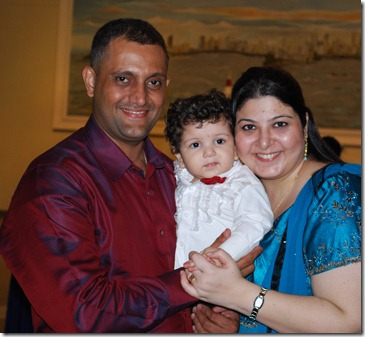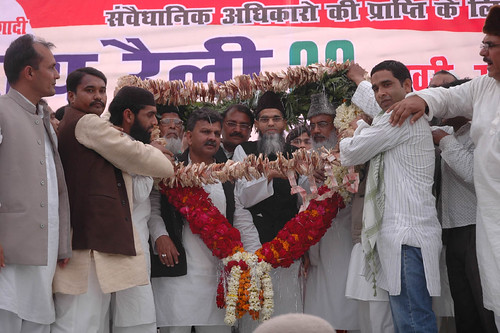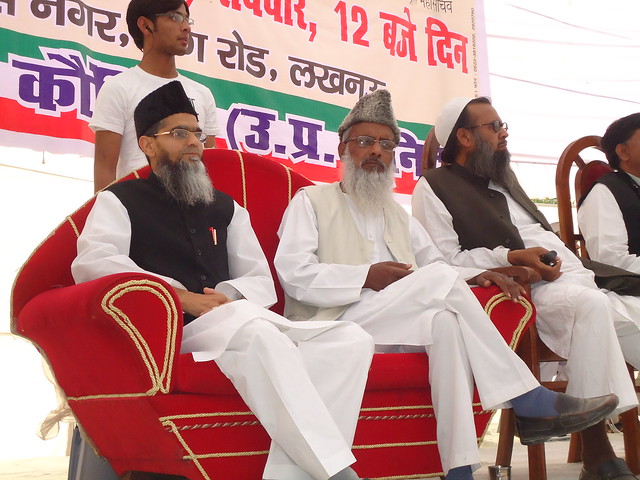 Lieutenant Commander Firdaus Darabshah Mogal was born on October 15, 1974, to Darabshah and Armin in Ahmedabad. Firdaus was the eldest of three sons. He did his schooling from Maneckji Cooper Educational Trust, Mumbai. He attended the Holiday Programme for Youth in 1990, which motivated him to join the prestigious National Defence Academy four years later. He was then commissioned into the Executive Branch of the Indian Navy as a Sub Lieutenant on January 1, 1998.
Lieutenant Commander Firdaus Darabshah Mogal was born on October 15, 1974, to Darabshah and Armin in Ahmedabad. Firdaus was the eldest of three sons. He did his schooling from Maneckji Cooper Educational Trust, Mumbai. He attended the Holiday Programme for Youth in 1990, which motivated him to join the prestigious National Defence Academy four years later. He was then commissioned into the Executive Branch of the Indian Navy as a Sub Lieutenant on January 1, 1998.
Being adventurous at heart, Firdaus volunteered for the submarine arm of the Indian Navy and passed the Basic Submarine course with flying colours. His illustrious career included appointments as Anti Submarine Warfare Officer onboard INS Shalki, the Training Coordinator of the Submarine School INS Satavahana, Vishakhapatnam, and the Executive Officer (second-in-command) of the submarine INS Shankush, where he worked till the day of his untimely demise.
For his professional competence, zeal, enthusiasm and devotion to duty, Lt. Cdr F.D. Mogal was commended by the Flag Officer Commanding-in-Chief, Western Naval Command, in 2007. On August 30, 2010, he made the supreme sacrifice in an unmatched show of fearless valour at sea under adverse weather conditions, while saving the lives of his shipmates onboard INS Shankush. He was a regular speaker at the Holiday Programme for Youth, conducted by the BPP, and spoke in May 2010 as well.
He is survived by his wife Kerzin and two-year-old son Yashan.
Indian Navys Lieutenant Commander Firdaus Darabshah Mogal from Mumbai was awarded the Shaurya Chakra ( posthumous) on Monday for his gallant deed of attending to the call of duty at the cost of his own life on August 30, last. " For an unmatched show of fearless valour in the face of death that saved the lives of six men onboard, Lieutenant Commander Firdaus Darabshah Mogal is awarded ‘Shaurya Chakra’, posthumously", reads the citation of the award.
Lt Cdr Mogal had assumed the duties of the Executive Officer of a naval submarine on May 26, last year. On August 29, whilst the submarine was enroute for a deployment, a defect was observed.
The authorities decided to surface the submarine in the exercise area post sunrise to attempt external repairs on the starboard flap since this was the only option that could enable it to continue her mission. At that time, the submarine was experiencing heavy seas and rough weather.
At around 6.55 am on August 30, when a team comprising three sailors, led by the Engineer Officer, was on the casing for defect rectification, a strong wave swept two of them and the Engineer Officer overboard. The third sailor was badly injured; Mogal immediately realised the gravity of the situation. Since the injured sailor hanging from the aft casing was required to be rescued, he himself proceeded for the job.

On reaching him, Mogal realised that the sailor was completely immobilized due to his leg injury. Displaying an unparalleled feat of heroism and fearlessness and with complete disregard for personal safety, the officer carried the sailor from aft casing to the bridge. Only a man of his strength and fortitude could have thought of even attempting such a task in the prevailing weather condition. He fought the nature in her elements and braved strong waves, heavy rainfall and severe rolling/ pitching that threatened to wash him and the injured sailor overboard. After about 20 minutes of frightening struggle, the officer reached the ladder on the fin that had to be climbed for handing over the injured sailor to bridge. The waves were such that even this ladder was getting submerged.
However, Mogal was not the one to give up. Once again a seemingly impossible task of climbing a narrow ladder with no strong foothold and a man on his shoulder was demonstrated by him. He handed over the injured sailor to bridge and then turned around to assist the divers in the recovery of the overboard men.
The recovery of the first casualty infused hope in the overboard men to hang on and they looked at their Executive Officer for their rescue.
Wife of Lt Commander Firdaus Darabshah (Posthumous) receiving Shaurya Chakra
The officer once again displaying an act of supreme bravery joined to assist the divers. He managed to pull overboard men close to the submarine. However, as he and the divers were assisting them to climb onboard a huge wave submerged them completely.
When the wave broke all six personnel, including the Executive Officer, were overboard.
In such circumstances, the officer maintained his cool and gathered all overboard men in one huddle. He then signalled bridge that he would get this huddle to climb onboard. Led by him, the huddle closed the submarines casing. He started helping others in the huddle to climb onboard.
He swam tirelessly and even made others stand on his shoulders so that they could climb onboard. His concern for his men in such dire circumstances was so much that he ordered all men to climb onboard before him.
Once all were onboard, the officer attempted to climb up and as he was about to reach, another unfateful wave washed him overboard.
It appeared that he had sustained head injuries due to this wave. He now seemed to be exhausted and realizing this, the Anti Submarine Warfare Officer ( ASWO) of the submarine proceeded to his rescue. Simultaneously, assistance of a Search And Rescue ( SAR) helicopter was called for from Mumbai. Lt Cdr Mogal, after saving the lives of six shipmates, seemed to be unconscious.
The ASWO held him till the SAR helicopter arrived around 30 minutes later. Lt Cdr Mogal was rescued by the copter and transferred to INHS Asvini.
However, the nations true son had succumbed to the injury and made the supreme sacrifice.
Source :bombayparsipunchayet.com parsikhabar.net

















